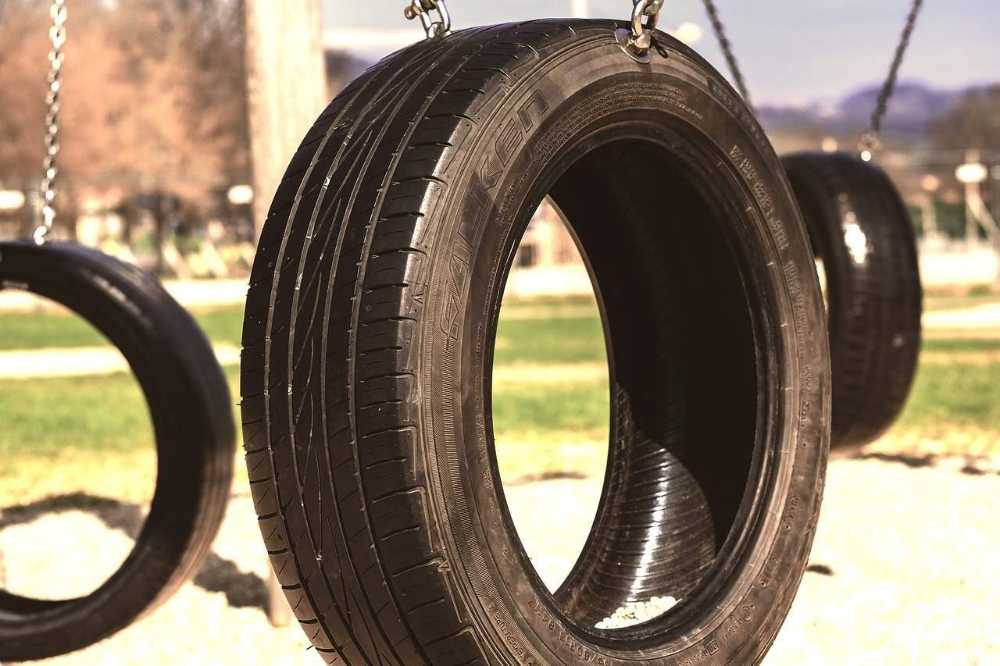Tires do not come with an expiration date in the way that food does, but they age and can become less effective or more dangerous after a certain number of years. Most manufacturers will tell you that the age of a tire is only one factor in determining its level of safety or usefulness.
Other factors affect a tire’s lifespan, like these.
- Tread depth
- Exposure to the elements
- How the owner cared for them
However, while tread depth is a traditional indicator of tire health, older tires may be more likely to be affected by the effects of the sun, heat or uneven wear. The rubber compounds that make up the tire are subject to deterioration that may make older tires less safe. Learn how to determine your tires’ age.
How to Determine Your Tires’ Age
The National Highway Traffic Safety Administration (NHTSA) mandates that all tire manufacturers label tires with a Tire Identification Number.
A Tire Identification Number will tell you these things.
- Tire size
- Location of manufacture
- Manufacturer’s assigned code
- The year and week that the tire was made
To determine your tire’s age, you must first locate this Tire Identification Number and know how to read it.
First, locate the letters ‘DOT’ on the tire. This stands for the Department of Transportation. After ‘DOT’ you’ll find a series of numbers and letters. If your tire was made after 2000 (which hopefully it was), you will look at the last four digits.
The first two of these digits provide the week of the year the tires were produced and the final two digits indicate the year. So if the last four digits are ‘1612’ then the tire was made in the 16th week of 2012.
Tires produced prior to 2000 will include three digits at the end of the Tire Identification Number to provide the week made and one digit to indicate the year of the decade. So if the last three digits are ‘133’ it means the tire was produced in the 13th week of the third year of the decade.
Find a Personal Injury Lawyer, Near Me
(855) 529-0269What is the maximum tire age?
According to the NHTSA Tire Wise campaign, many tire manufacturers recommend replacing tires that are six to 10 years old even if the tread appears fine. However, many drivers wear down their tires much quicker than this timeframe.
If you are an average driver, then you’ll probably replace your tires every few years. As you use the tires, the tread wears and other parts of the tire may become worn, increasing the risk of a tire-related accident.
But drivers who drive their vehicles only on special occasions or weekends might have the same tires on a car for ten or more years. Aged tires, in this case, can suffer from undetected problems related to tire aging. Thus, it’s important to know your tires’ age and replace them within the manufacturer’s recommended timeframe.
Tire maintenance like maintaining tire pressure is important to prolong tire life and avoid blowouts, but ultimately tire age and wear can take a toll on the tire and affect its safety.
Car manufacturers including Nissan and Mercedes-Benz recommend replacing tires after a period of six years regardless of tread wear. However, Michelin and Continental tire manufacturers have made a recommendation that says 10 years is the tire life maximum. Other manufacturers or organizations may have different recommendations.
You May Recover Compensation for a Tire-related Accident
If you’ve been involved in an accident attributed to tire failure or defect, you may be entitled to compensation from the tire manufacturer. Chalik and Chalik is dedicated to protecting consumers injured because of defective tires. Call us today at 855-529-0269 or contact us online to set up a free consultation to discuss your case with an attorney.
Call or text Chalik & Chalik
(855) 529-0269






